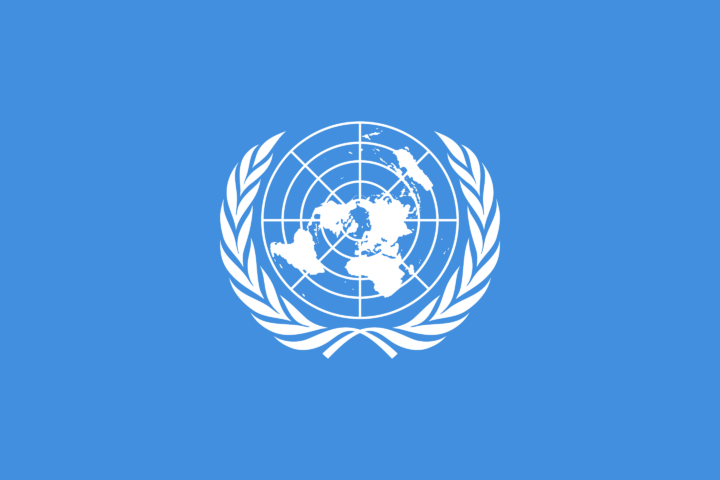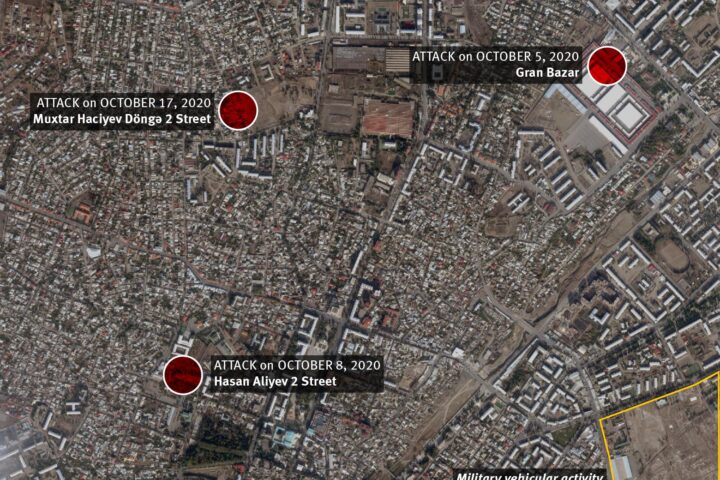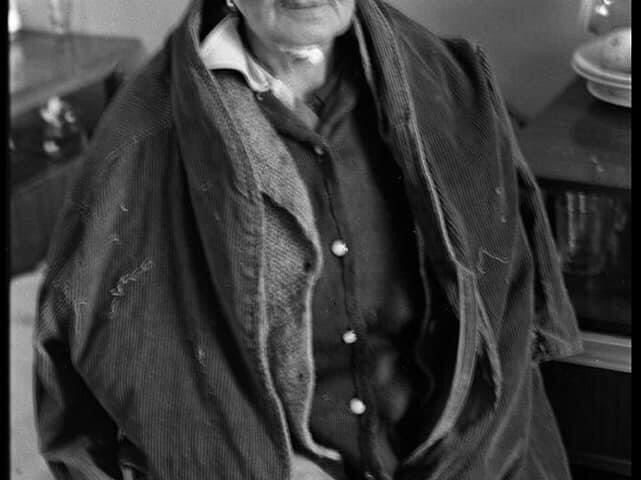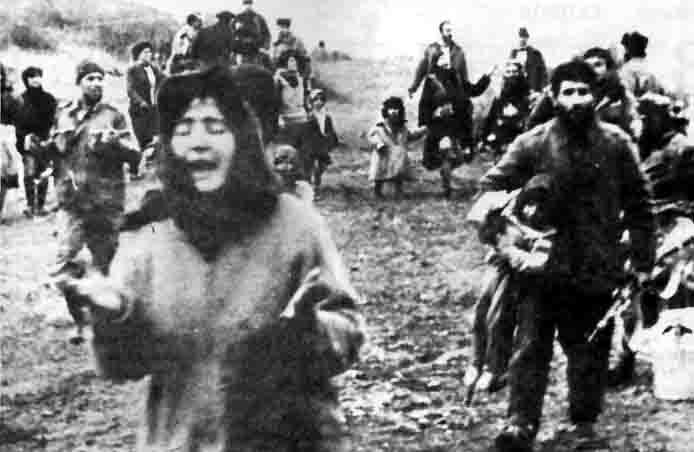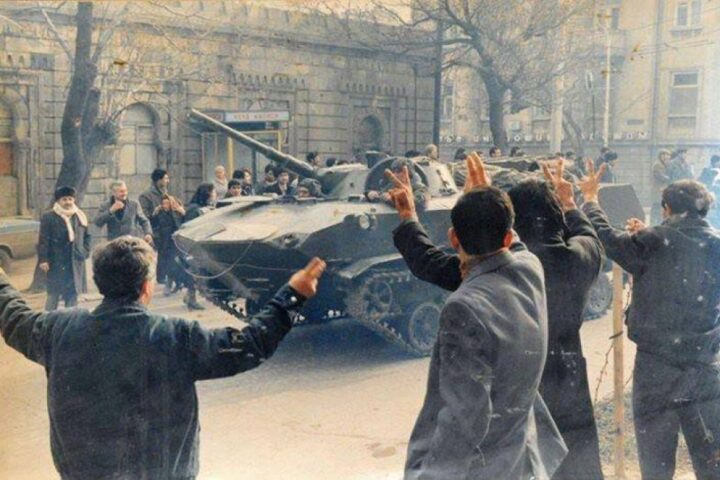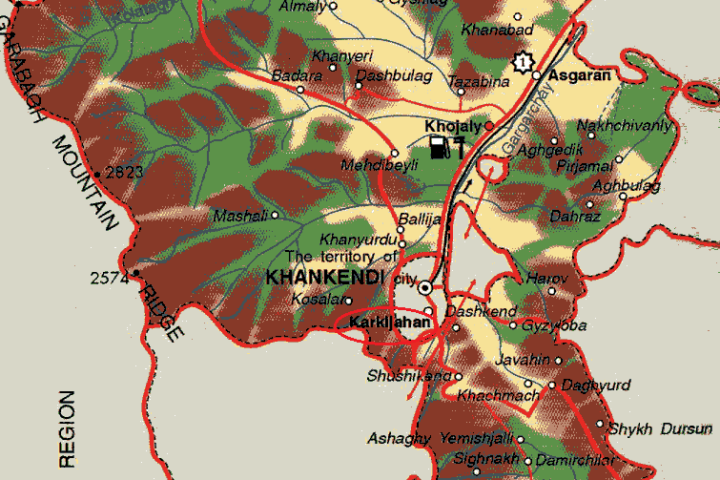2. The possible schemes of principle for the solution of the problem
In this chapter we set ourselves the task of bringing together all variants of a political settlement of the problem of NK available to us. We also tried as far as possible to assess the degree to which these variants are realizable.
1. The position of Azerbaijan
This position consists of the fact that the conflict which began in 1988 was the result of military aggression carried out by Armenia against Azerbaijan with the aim of seizing and uniting part of Azeri territory to Armenia. As a result of the aggression, the Armenian side seized entirely or partially seven regions of Azerbaijan outside the borders of NK. Hundreds of thousands of Azeris became forced migrants14. Azerbaijan demands as immediate measures the withdrawal of Armenian military units from the occupied territories as well as the return of refugees to their homes. The Azerbaijan Republic is ready to grant NK “the highest status of self-government within the Azeri state”, the form and likelihood of realization of which are not specified and must be worked out in the course of the negotiating process. The main point, according to this position, is the preservation of the territorial integrity of the Azerbaijan Republic, which means recognition of the Azerbaijan Republic within the borders of the Azerbaijan Soviet Socialist Republic. This question cannot become a subject of negotiations. As to the de facto independence of NK (the existence of the unrecognized Nagorno-Karabakh Republic), the Azerbaijan Republic believes it to be entirely the result of aggression on the part of the Republic of Armenia.
2.2. The position of the Azeris of Nagorno Karabakh
This position is rarely voiced and its official version on the whole coincides with the position of Azerbaijan’s leadership. Another viewpoint is held by the Organization for the Liberation of Karabakh (OLK) that represents the Azeris from NK and occupied territories. The OLK’s approach to the solution of the Azeri-Armenian conflict consists of the necessity of the liberation of the occupied lands by military force as soon as possible and the return of refugees to the places of their former residence. After the liberation of the occupied territories, for the purpose of achieving stable peace between Azerbaijan and Armenia, discussions should be started on the possibility of forming structures of self-government for the Armenian population of the Azerbaijan Republic in the territory of Azerbaijan and of the Azeri population deported from the Republic of Armenia in the territory of Armenia. This would require the use of all resources of international organizations including the United Nations, the OSCE, the Council of Europe, as well as means of people’s democracy and public human rights organizations.
The OLK deems that the main principle of structures ensuring the peaceful co-existence of the Azeri and Armenian populations in the territories of the Azerbaijan Republic and the Republic of Armenia must be the complete coincidence of the status of the administrative rights and powers of the structures formed in the Republic of Armenia and the Azerbaijan Republic.
After agreement is reached with the Republic of Armenia, a plan of realization of the agreements is developed and measures for its simultaneous (hereinafter parallel) implementation begin.
The OLK thinks that stable peace in the region is possible only with a fair solution to the conflict. The peoples will be able to live in a stable and fair prosperous world only if there are neither winners nor losers, if no one is able to benefit from the results of ethnic cleansings and aggression.
3. The position of the authorities of Nagorno Karabakh
The position of the Nagorno Karabakh authorities is the acknowledgement of NK’s right to self-determination up to the formation of an independent state.
NK’s leadership gives priority to the question of status in the resolution of the conflict. It believes that according to all provisions of the international law the Nagorno-Karabakh Republic (NKR) must be recognized as a legitimately formed independent state. In particular:
– There were no legal grounds for the inclusion of NK into Azerbaijan, except by a certain resolution of the Caucasian Bureau of the Bolshevik Party in 1921.
– At the same time, from the point of view of Soviet laws which were in effect at the time of the NKR’s declaration in September 1991, this act is legally irreproachable. The declaration of the NKR was in full conformity with the USSR Law of April 3, 1990 “On the order of settling matters connected with secession of Soviet Republics from the USSR” and was implemented on the basis of a referendum on December 10, 1991, conducted in the presence of numerous international observers and recognized by the world community. The NKR authorities discard as unfounded the statements of Baku that this referendum was allegedly conducted after the ethnic cleansings of the Azeri population of NK. They emphasise that ethnic cleansings began only after the start of military operations, i.e. after January 1992. During the referendum ballot papers were delivered to all areas of NK inhabited by Azeris but Azeris refused to take part in the referendum on Baku’s demand. Finally, the Armenians highlight the fact that even the participation of the Azeri population of NK in the referendum couldn’t have changed its outcome, as they (Azeris) made only about a quarter of the population of the NKAR.
– The NKR rejects any attempts to restore the former status quo and extension of the jurisdiction of Azerbaijan to it. The leadership of the NKR believes that they won in the battlefield and the Azeri armed forces suffered a defeat. And this circumstance must be considered in determining the status, because there is no historical precedent for a victor subjecting to the dominance of the defeated country. The relations between NK and Azerbaijan can only be horizontal, with different modifications.
– The independence of NK and the achievement of such a degree of security which would ensure the preservation of the Armenian population of Karabakh are necessary. It is natural that the Karabakh army is the main guarantor of the security of the republic and its Armenian population.
– The declaration of the NKR as an independent republic means that its integration with the Republic of Armenia is not on the agenda. The leadership of NK regards this as a manifestation of compromise, the readiness to remove the tension because of the possible unification of two Armenian states, which is taken painfully by Azerbaijan. Though, the leadership of NK does not hide the fact that they see the ultimate goal in the unification with the Republic of Armenia (This was repeatedly stated by NK’s leader A. Ghukasian).
The issue of the return of Azerbaijan’s territories occupied by the Karabakh Army must be tied to the issue of the status. So to say, “lands in exchange for status”.
4. Nagorno Karabakh as part of Armenia
This variant, which Armenia and NK put forward in the initial “Soviet” period of the development of the crisis, needs no further commentary. Besides, Armenia and the NKR do not advance such a demand now. Armenia’s current position is as follows: it will agree with any kind of the Karabakh problem solution acceptable to the Armenians of NK, including on the status. Proceeding from this, the leadership of the Republic of Armenia doesn’t insist on NK’s uniting with it. Therefore, the resolution of the parliaments of the Republic of Armenia and NK of December 1, 1989 about the unification of NK and the Republic of Armenia still remains on paper (which, though, serves as a ground for extremist Armenian politicians to criticise the leadership of the Republic of Armenia). This fact, as well as the fact that officially Armenia doesn’t recognize the NKR’s independence are intended not to complicate the situation, to maintain room for maneuvering and leave the door open for political negotiations.
5. More than autonomy but not a state
Schemes that can be conventionally called “more than autonomy, but not a state” were often proposed in the process of searching for an acceptable solution to the Karabakh problem. Perhaps the first such attempt was the so-called “Willy’s Plan,” which was proposed back in 1919, and envisaged the transformation of NK into some “Special Zone” (SZ) within Azerbaijan under a sort of U.S. protectorate. (One of the clauses of the project believed to have been authored by U.S. Army Colonel William Haskel, read straightforwardly: “security and law and order in the special zone is ensured by the U.S. Army under the command of the consul”15). Now this plan is only of historical interest, except perhaps that it reaffirms that the Karabakh problem, despite the claims of many of the nomenclature statesmen of the Soviet period, is not “far-fetched” but existed still at that time.
[no_toc]




